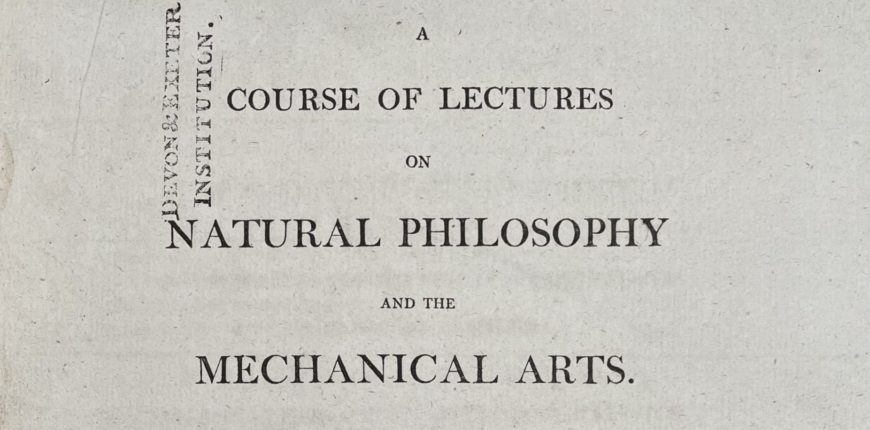Thomas Young (1773-1829)

A course of lectures on natural philosophy and the mechanical arts (1807)

Thomas Young was born in Milverton, Somerset, in 1773, the eldest of ten children in a Quaker family. At the age of just 13, Young educated himself in mathematics, reading Euclid’s Elements and the works of Sir Isaac Newton (1642-1727). He also read other scientific works, as well as books on history and languages. In the autumn of 1792, he moved to London to begin his studies in medicine. As well as attending lectures at the Hunterian school, he enrolled as a pupil at St Bartholomew’s Hospital. He was elected a fellow of The Royal Society on 19 June 1794.
Young continued his medical training at the University of Edinburgh in 1794. As a Quaker he could not study at Oxford or Cambridge, so within Britain he could only obtain a degree from a Scottish university. He left Edinburgh after one year of study, but later learnt of a change in regulations by the College of Physicians requiring a period of two years study at the same university before qualifying to practise medicine. He therefore went to Emmanuel College Cambridge, but before doing so he had to declare himself a member of the Church of England. (Evidently, he had been moving steadily away from the strict Quaker rules, attending dances and the theatre while in Edinburgh.) Although enrolled in the medical course, Young did not study medicine at Cambridge, feeling that he already knew sufficient of that subject. Instead, he worked on his own, learning more physics in order that he might pursue other interests.
In 1801, at the age of 28, Young was appointed Professor of Natural Philosophy at the Royal Institution in London and he immediately set about preparing a series of lectures which he presented between January and May 1802. When it was repeated in 1803, the course had grown to 60 lectures and covered everything from mechanics, drawing, architecture and carpentry to music, mathematics, the properties of liquids and gases, optics, heat, electricity, gravitation, and light. The work must have been immense: in March 1802 Young admitted that ‘an immediate repetition of the labour and anxiety that I have undergone for the last 12 months would at least make me an invalid for life’.
After the second series of lectures in 1803, Young left the Royal Institution. He set about preparing his lectures for publication, a task which took almost 4 years. The expanded and revised versions of the lectures finally appeared in 1807 in two volumes as A Course of Lectures on Natural Philosophy and the Mechanical Arts, which also included an annotated bibliography of 20,000 relevant publications.

